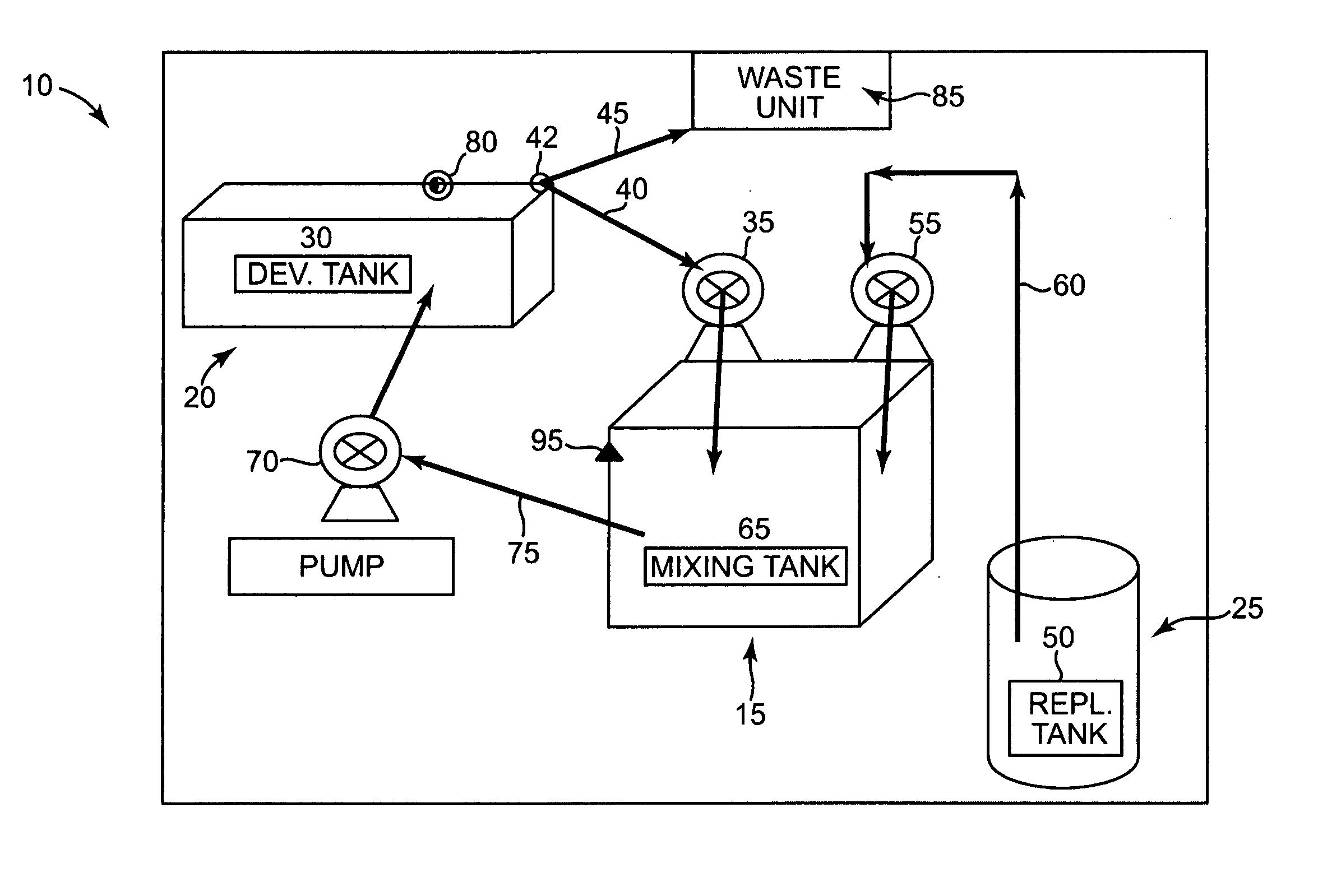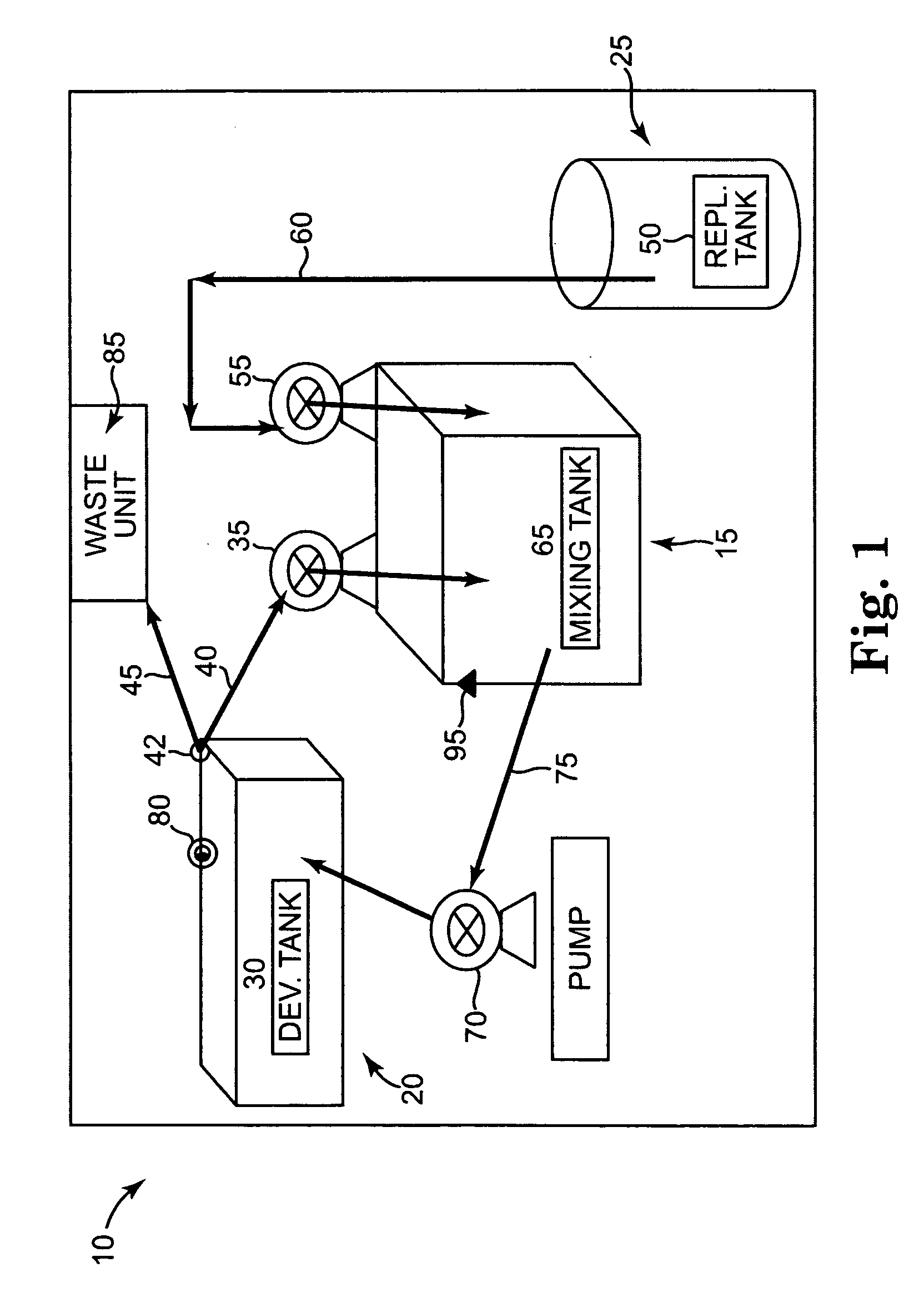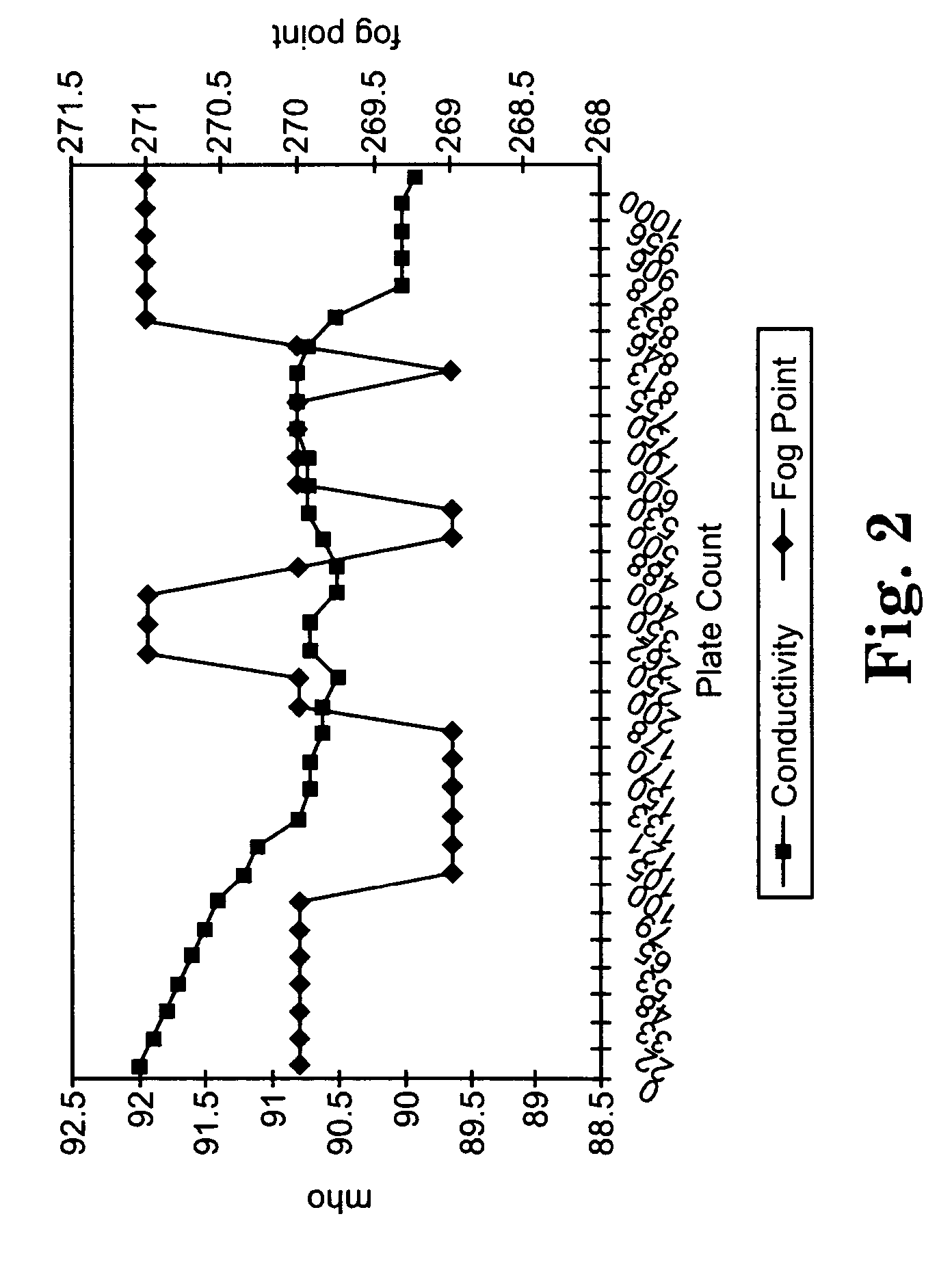Electro-mechanical system and method for mixing replenishment for plate precursor developers
a technology of precursors and electromechanical systems, applied in the field of lithographic printing, can solve the problems of depletion of active solvents or dispersing agents, changes in developer activity, and loss of developer volum
- Summary
- Abstract
- Description
- Claims
- Application Information
AI Technical Summary
Benefits of technology
Problems solved by technology
Method used
Image
Examples
example 1
Change in conductivity and Fog Point
[0042] Change in fog point and conductivity was determined over the course of 1000 printing plate precursors using the MX1813 developer replenished with MX1919. A 1:1 ratio of the seasoned developer and replenisher was added after every plate developed. The fog point and preheat oven operating temperature was first determined as described above. The conductivity measurement in ohms was determined with a processor on-board conductivity meter with ATC.
[0043] The data shown in FIG. 2 demonstrated that when the MX1919 replenisher was used the fog point shift was within approximately a 2° F. change. The normal fog point shift from start to the end of a cycle using only developer was an approximately 3° F. downward shift, as shown in Table 1.
[0044]FIG. 2 demonstrated that the developer conductivity dropped by 2 to 3 conductivity points during the course of the 1000-plate precursor cycle compared to the a system when only developer was used (see Table...
example 2
Mix Ratio Testing
[0045] The exposure conditions as detailed above were repeated and developed using the ratios of replenisher to seasoned developer as shown in Table 2. The original developer, MX1813 was replenished with MX1919. The conductivity readings (ohms) were monitored using a processor on-board conductivity meter with ATC. The results are shown in Table 2.
TABLE 2Plate Count3:11:11:30929292.52291.991.991.93391.991.891.74891.891.791.35391.891.690.96591.791.590.77991.691.490.510091.691.290.410591.491.190.112190.990.890.113390.790.789.915090.790.789.717090.690.689.417890.690.689.420090.590.589.325090.790.789.126290.790.788.835090.690.588.840090.690.588.548890.690.688.350090.790.788.353090.790.788.360090.790.788.270090.890.887.875090.890.88680090.890.885.485090.790.785.390090.590.585.2100090.59085.1
[0046] The data shown in Table 2 demonstrated that the use of a 1:1 replenisher to seasoned developer is effective in maintaining the developer conductivity during the course of the...
PUM
| Property | Measurement | Unit |
|---|---|---|
| temperature | aaaaa | aaaaa |
| temperature | aaaaa | aaaaa |
| temperature | aaaaa | aaaaa |
Abstract
Description
Claims
Application Information
 Login to View More
Login to View More - R&D
- Intellectual Property
- Life Sciences
- Materials
- Tech Scout
- Unparalleled Data Quality
- Higher Quality Content
- 60% Fewer Hallucinations
Browse by: Latest US Patents, China's latest patents, Technical Efficacy Thesaurus, Application Domain, Technology Topic, Popular Technical Reports.
© 2025 PatSnap. All rights reserved.Legal|Privacy policy|Modern Slavery Act Transparency Statement|Sitemap|About US| Contact US: help@patsnap.com



